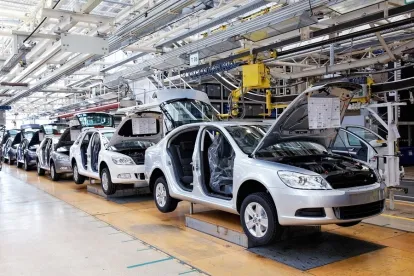As the automotive industry rebounds from its recessionary levels to an all time record level of spending on vehicles and healthy profitability, one of the key drivers of the increased vehicles sales has been increased innovation and major redesigns of vehicles. The number of new products in 2014 increased nearly 50% compared to the preceding 3 years and in 2015 alone, about 50 new or redesigned models were expected to hit the market. In order to keep pace with its Japanese counterparts, domestics OEM’s have worked hard to introduce more sophisticated infotainment features and high end electronics into their mainstream vehicles, which has resulted in a higher electronics/software content in vehicles.
In order to provide such increased content, we have seen a large increase from non-traditional players in the automotive industry and speed to market and premium on protecting innovation is of utmost importance. Automakers have not traditionally seen patents as a revenue-driver, but today, the automotive industry is the 3rd most active sector for worldwide patents and the rate of growth is faster than any other industry. One of the principal drivers has been the push for greater fuel efficiency, but the evolution of connected and autonomous vehicles and improvements in batteries for electric and hybrid vehicles is creating a different landscape in the automotive industry. As the use of patents increases in the automotive industry, new threats are emerging to the traditional OEM business model.
The increase in technology innovations and the healthy nature of the automotive market is putting a bulls-eye on the automotive industry for patent litigation. For starters, traditional competitor-on-competitor cases have continued among suppliers desiring to protect and/or capture market share. In addition, massive technology integration has invited a significant expansion of electronics-related patent suits in recent years against automotive companies, much the same way electronics-focused patent litigation expanded in the past decade against consumer electronics companies selling laptops and cellphones. Perhaps most importantly in terms of the total number of suits, the last few years have seen a significant increase in suits brought by non-practicing entities against automotive companies, in all kinds of technology areas. Some examples include:
-
American Vehicular Sciences, who has sued OEMs on a number of patents allegedly covering “heads up displays” with elements of motion detection, voice recognition, and user interface features;
-
Innovative Display Technologies which has asserted a series of patents relating to “light emitting panel assemblies” asserted against LCD displays; and
-
Beacon Navigation bringing a series of suits in federal court and the International Trade Commission against numerous OEMs relating to automotive GPS navigation systems.
The traditional supply chain in the automotive industry – involving suppliers at many tiers and located in numerous countries all over the world – brings about complicated questions for defending the suits. Some issues include practical ones associated with figuring out the real details of the technology that is being accused of infringement. For U.S. lawsuits, the geographic reach and ability to obtain discovery can place important limits on the available discovery. In addition, normally-fierce competitors are often faced with having to coordinate defenses to avoid contradiction in the suits. This is aside from the legal issues concerning who is ultimately responsible for the patent owner’s assertions of infringement. Lessons learned from consumer electronics industry should provide insight for handling similar issues in the automotive industry.







 />i
/>i
